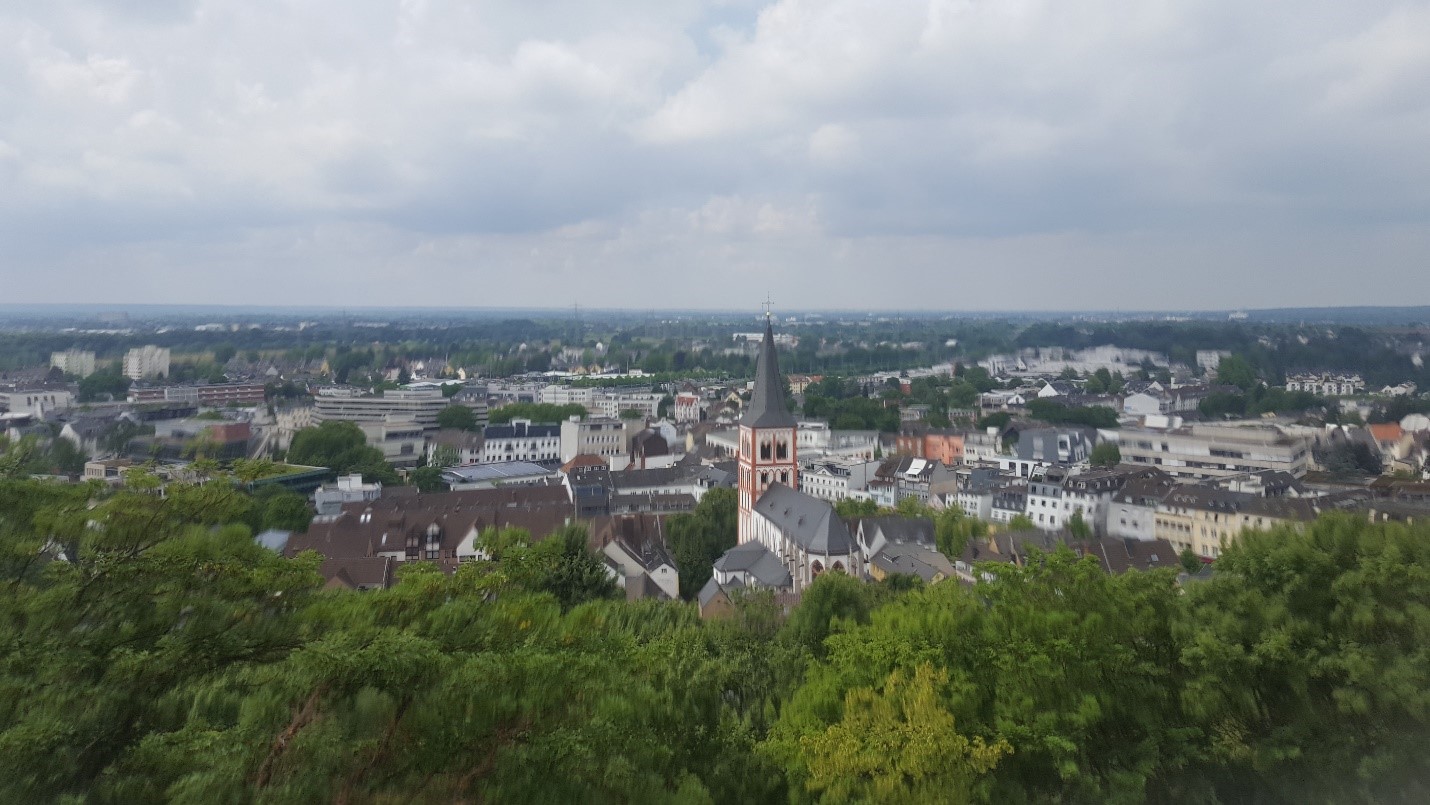Here’s another story where one door closes, Another opens.
Siegburg, was such a place. The name Siegburg translates as “Victory Castle.”
Our 2017 journey to Siegburg was a witness’s return to such a namesake. It’s where our ultimate road to victory began. The door at Michaelsberg Abbey in Siegburg had closed many times since 1064 when it was first opened. The last time was in 1941, when the German SS shut it down and took it over for themselves.
The abbey was named after St. Michael the Archangel, the Defender in Battle. And was located on Michaelsberg (Michael’s Mountain), a very prominent high hill in the center of town, with a spectacularly commanding view of a large part of the Ruhr Valley. A vast area where the battle of the Ruhr Pocket took place. A place where not only the door to the abbey would be reopened, but where a German Army of more than 300.000 would be surrounded and defeated. Victory Castle, indeed…
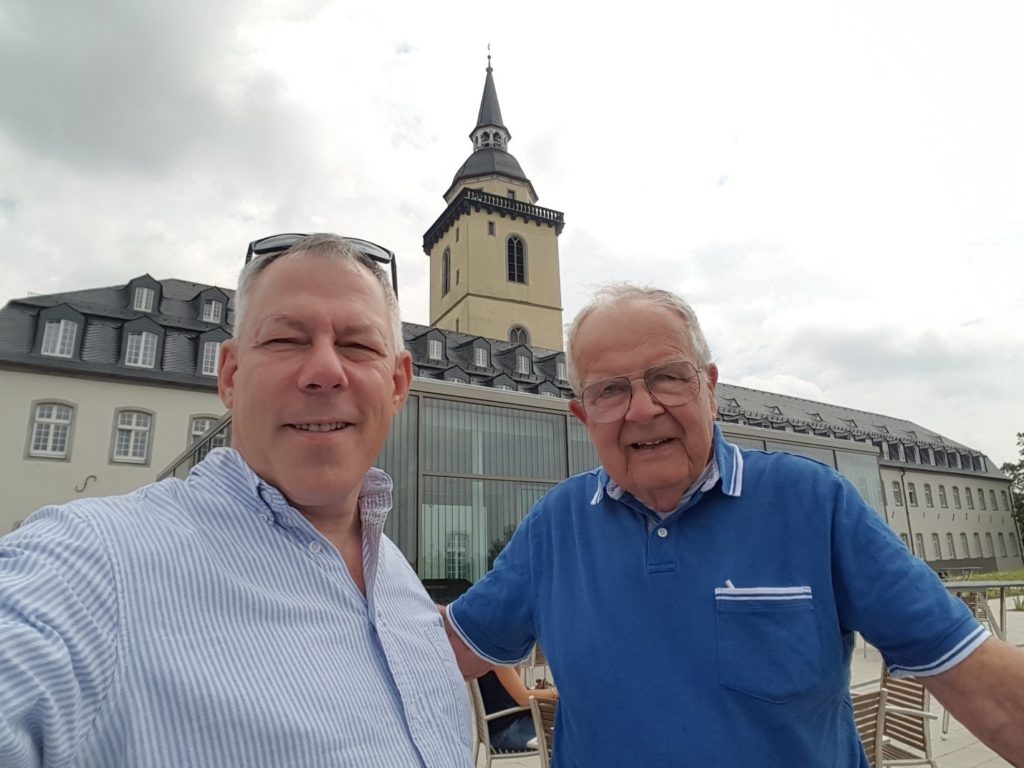 Steve and Bob at Michaelsberg – July 2017
Steve and Bob at Michaelsberg – July 2017
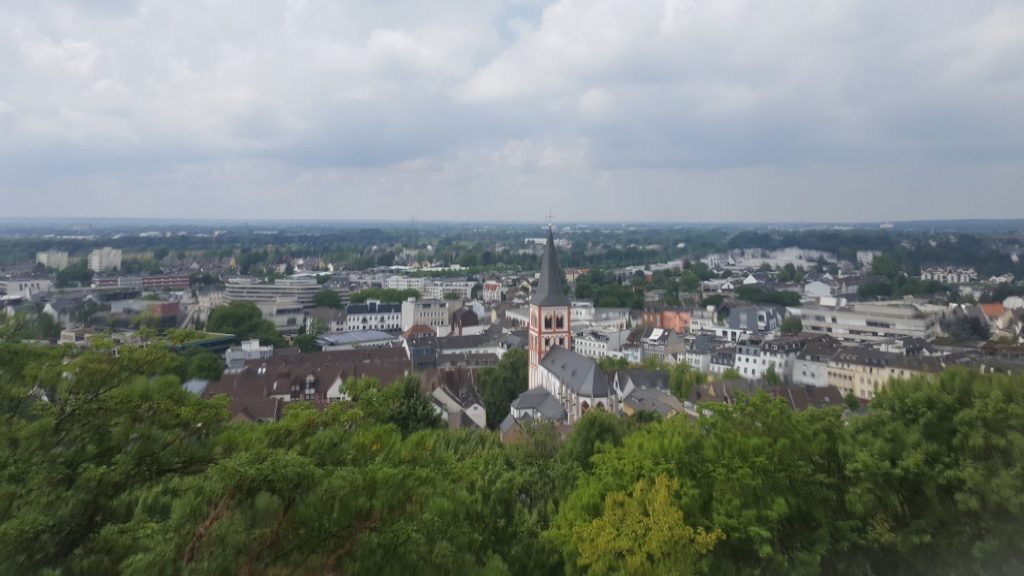 View of Ruhr Valley as seen from Michaelsberg – July 2017
View of Ruhr Valley as seen from Michaelsberg – July 2017
How appropriate was it that we in A Company, 59th Armored Infantry Battalion, 13th Armored Division were a parallel part of the castle reopening that April? On a day when A Company became involved in the battle of the Ruhr Pocket.
On April 10, 1945, I had no idea of the significance of that symbolic door opening, as my consciousness was focused on what was happening all around me as A Company was being introduced to combat.
Our first taste of that experience is best described by Captain Ford’s narrative:
“At noon 10 April 1945, the company left a bivouac area near Siegburg Germany as the lead element of “CC-B.” In the distance, the rumble of artillery gave some indication of what was in store for the company in the near future. As the columns entered Siegburg signs posted hastily warned that the area was under heavy enemy fire. An overpass, blown by the enemy, blocked the route on the edge of the town. Realizing the necessity of continuing the advance Capt. Ford established an alternate route through a railroad yard. Capt. Ford, Lt. Wood, 1st Sgt. Lyons, Tec 5 Medill, and PFC Franks laid ties across the rails to let vehicles to pass. As the line of vehicles started through the railroad yard a mortar shell landed behind one of the vehicles and the call for “Medics” was passed down the column. Two men in the half-track were injured and a shell fragment had sheared off the entire rack of water cans on one side.”
My 1st Squad half-track was immediately behind the one hit and I had a close-up view. It had a more serious appraisal than the previous description. The mortar rounds were coming at us from I know not where, but there were several, not just one. My Squad Leader described them as being in what he called a ladder, where the mortars had been previously zeroed in to a pattern of successive placements. The hit half-track in front of us was the last to have received fire, lucky for us. We were next, but someone had discovered where the mortars were located and put them out of commission. We were saved, but were duly scared. One of the guys in the half-track ahead of us lost an arm, and the other wounded enough to never return to combat, either.
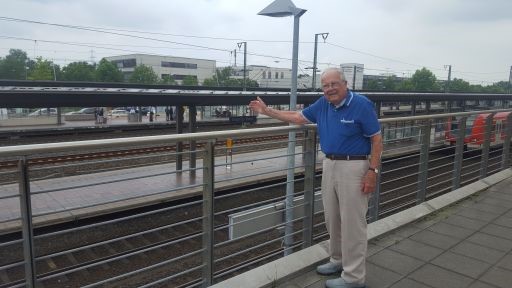 Siegburg Rail yard – July 2017
Siegburg Rail yard – July 2017
Our next significant episode happened late in the day when we, in the process of proceeding north from Siegburg. We came upon the Agger River. and as was expected, the Germans had blown all the bridges.
Our job was then to cross the river on foot in order to provide protective cover for the engineers to build a pontoon bridge upon which to get our tanks and halftracks across. Around 8:00 PM that evening we waded neck deep in the freezing river holding our rifles and equipment over our heads.
Here’s a part of Capt. Ford’s description:
“The crossing was accomplished under intense enemy fire which emanated from emplacements dug in on the bluffs across the river. The enemy artillery consisted of 20mm Flak guns, normally an anti-aircraft piece which they employed here for direct fire. Throughout the crossing tracers raked the near bank illuminating the night sky. Occasionally enemy machine guns added to the fire forcing everyone to seek shelter.”
A fiery opening of A Company’s door to its contribution to the 13th Armored Division’s role in restoring a just peace into a world at war. Happily, it opened a door to those Germans who also wished to become part of a world at peace.
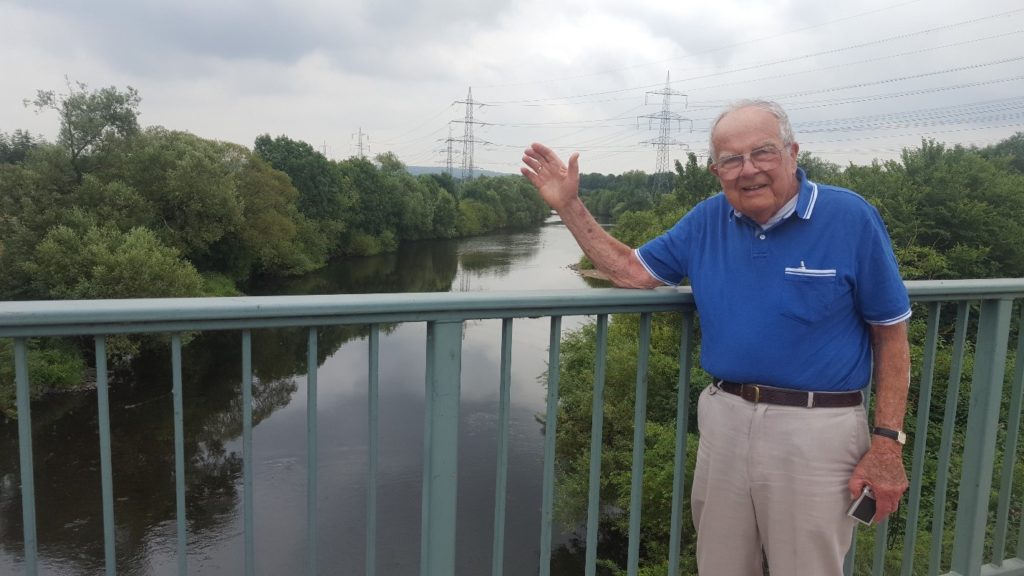 Rebuilt Bridge over the Agger River at Siegburg – July 2017
Rebuilt Bridge over the Agger River at Siegburg – July 2017
It so happened in Siegburg that Steve and I came upon another rebuilt bridge. Only this time over the Agger and not to get us to beer joints, like the one we needed in Berg, but to get A Company and the 13th Armored Division over so we could proceed with our advance through the Ruhr Pocket. Crossing bridges would ultimately become a significant part of the message behind these revisits to the past.
Another crossing occurred simultaneously with the earlier mentioned German rededication of the Abbey at Siegburg in 1945. It coincided almost exactly with the arrival of the 13th Armored Division to liberate those Germans still under Nazi oppression. Steve and I returned home with several pieces of literature that detail the stages of the Michaelsberg restoration. Unfortunately, they are all in heavy duty German which neither of us is equipped to handle, but we do have German friends who are in the process of helping us in their translation.
I will spend no more time here on those elements and their expressions in our 2017 trip, but will continue to develop them as concluding messages contained in my last three stories.
The next story is entitled: “Luneville.”
